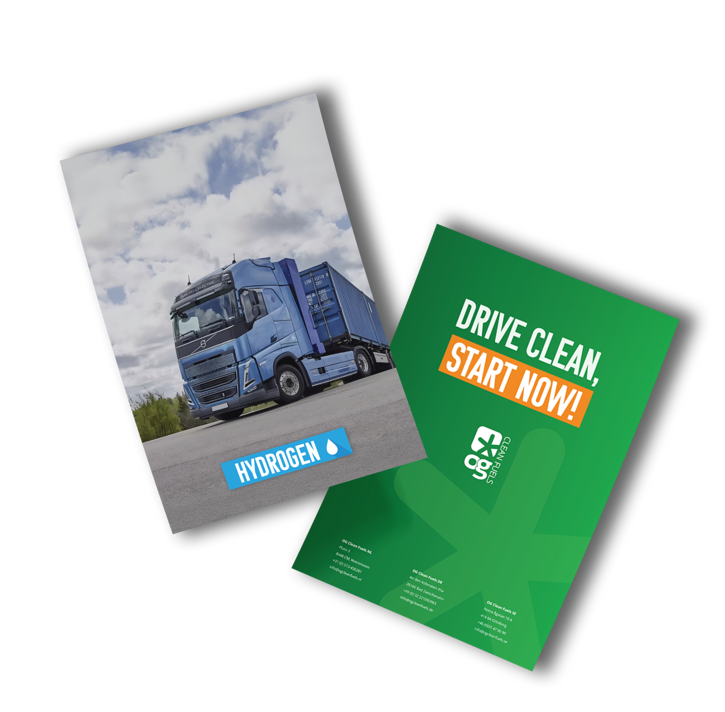Hydrogen
Range: 500 - 1000 km
100% CO₂ reduction
4 OG fuel stations in Europe
- Our clean fuels
- Hydrogen
The fuel of the future
Hydrogen is often described as the fuel of the future – and with good reason. With only water droplets as its 'emissions', it enables completely emission-free driving – and allows for long distances on a single tank. It is ideal for heavy and international transport, but unfortunately the technology is not yet advanced enough for large-scale hydrogen use.
The number of refuelling locations is still limited, production requires a lot of energy, and the costs are higher than those of other sustainable fuels. In recent years, OG Clean Fuels has gained experience with hydrogen and opened several refuelling locations, but these are now on standby, ready to be used in the future.
Based on the experience gained and developments in the technology, we expect hydrogen to really take off only after 2035. For now, OG is mainly focusing on biofuels that are already widely available, such as Bio CNG and HVO100.

